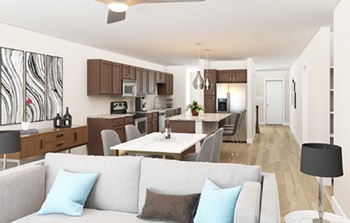The COVID-19 pandemic has shifted the way telecommuters, or people who have the ability to work from home, look at their homes. What was once an escape from the office has now turned into the office, gym, home and hotel rolled into one. In many ways, this alters the vision of what truly makes a house a well-functioning home.
One of the largest trends currently is single-family - both attached and detached homes - built for rent as more of the population searches for a lower denisty area, bigger living spaces and flexibility of rent as the job market continues to change. In fact, this sector is the fastest growing segment of the housing market, according to an analysis by the Urban Institute. This seems to be the trending case for one of the largest demographics, millennials, who are now transitioning from smaller apartments and debating families or expansion in general. Or this could be due to other factors such as student debt, a tight job market, and the inability to save for a down payment which have kept a number of potential home buyers out of the market.
While many middle-class renters lack the money for a downpayment, many do have enough to spend extra on a rental home, according to a recent Multifamily Executive artcile on the rise of the trend.
The appeal of a single-family rental home is also in the community in which it resides. Well-connected, outdoor spaces such as nearby parks, bike trails and yards are still highly desirable.
In the case of Hubbell Realty Company's Centennial Crossing, the most recent rental community, which is named after the neighboring 33-acre Centennial Park in Waukee, the attached rental homes span 1,250-1,700 square feet all on one level. The homes have two or three bedrooms, walking trail connections in the back yard, a community building with an attached pool and dog park for resident furry friends. Two-car garages, private patios and zero exterior maintenance are also part of the packaged rental agreement.
According to a recent National Association of Home Builders article, success in this market also requires an understanding of how to approach construction of built-for-rent homes and how they differ from for-sale single-family homes. This includes streamlining the design process and the options available to prospective residents, as well as understanding how components such as drain storage and utilities will be set up, especially if there is intent to potentially sell the properties in the future.
Within this consideration also comes increased internet speeds and well-positioned communities that can handle growth.


ADD A COMMENT